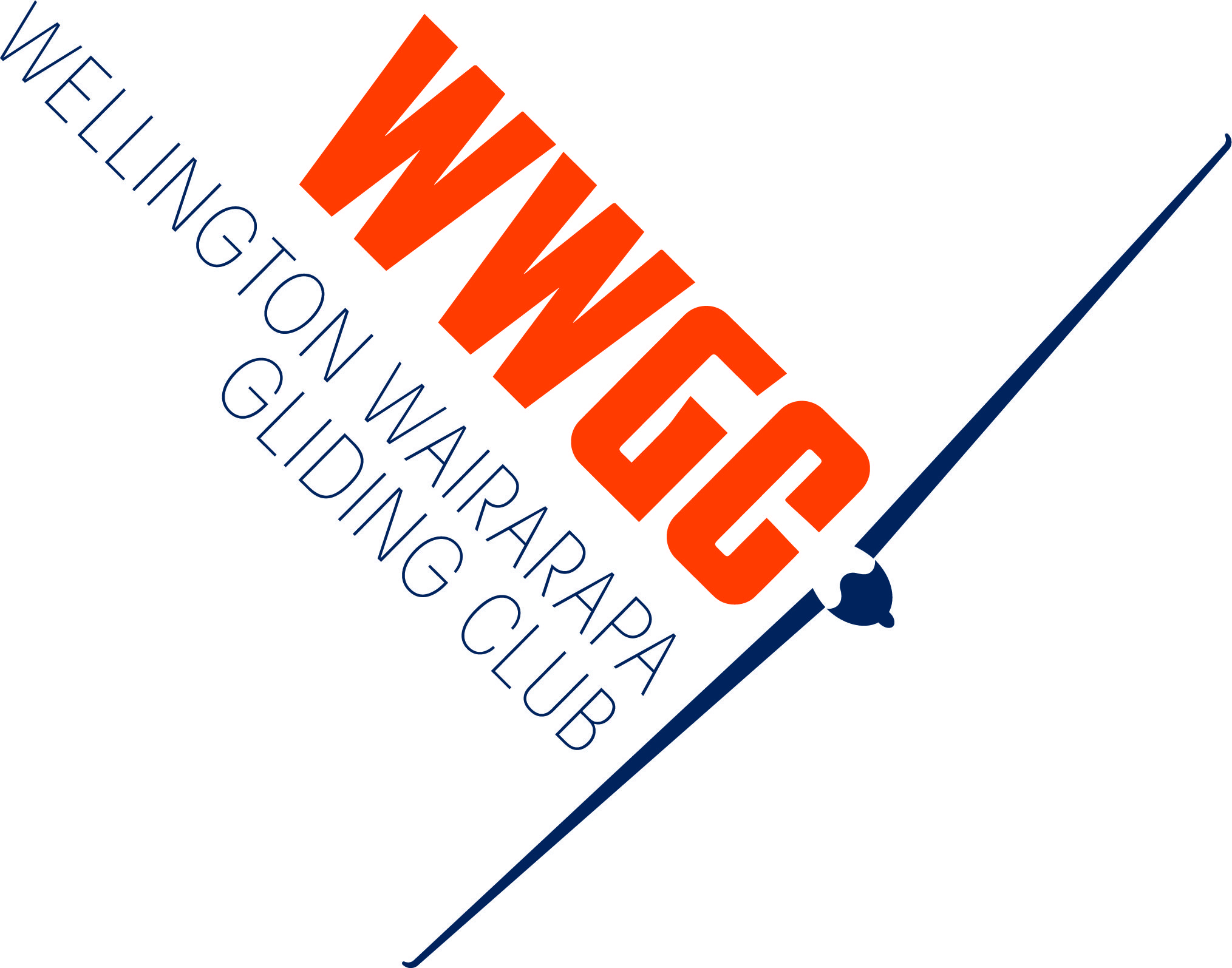Wellington Wairarapa Gliding Club

what is gliding
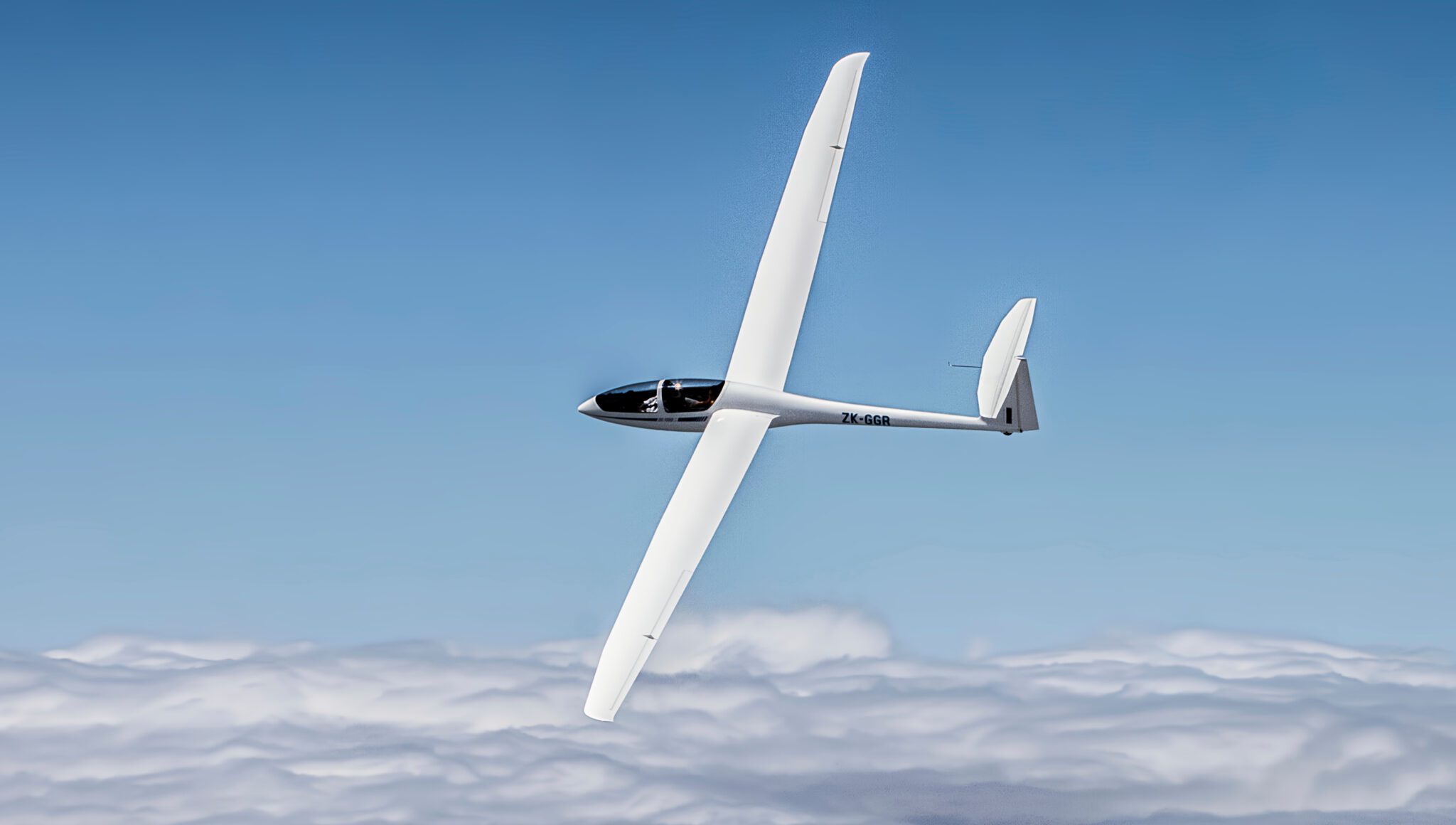
A glider is an aircraft that can stay aloft without an engine. Modern gliders are streamlined and slide smoothly and cleanly through the air. But a glider needs to keep descending as it flies along, just as a car with the engine off needs to roll down a slope to keep moving forward.
So how do glider pilots climb thousands of feet, stay airborne for many hours, and fly hundreds of kilometres, all in a single flight? Without using an engine?
The answer is simple: after launching, the pilot seeks places where the air is going up ('lift') faster than the aircraft is sinking down through it. This pleasurable and challenging activity is called soaring. Always on the lookout for lift.
sources of lift
What makes air go 'up' in certain places? How does a glider pilot know that the air is going up? How does the pilot stay in the rising air and not end up in sinking air? These are all great questions.
soaring using thermal lift
A ‘thermal’ is a giant bubble of air warmed by the earth’s surface. This air floats up through the colder air above it. A thermal can hold thousands of tonnes of air. A glider pilot can circle tightly inside this thermal and quickly gain height, all the way up to cloud base.
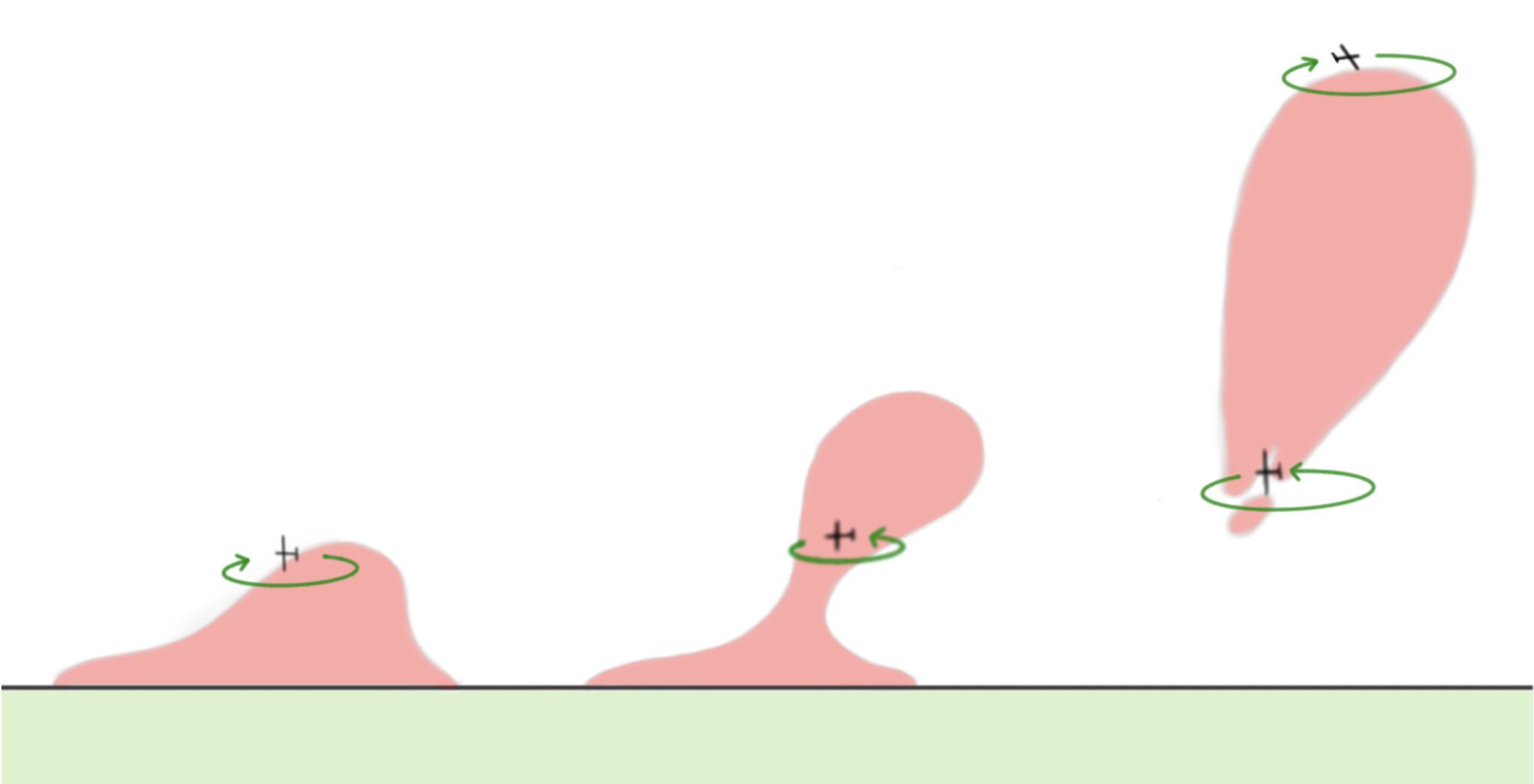
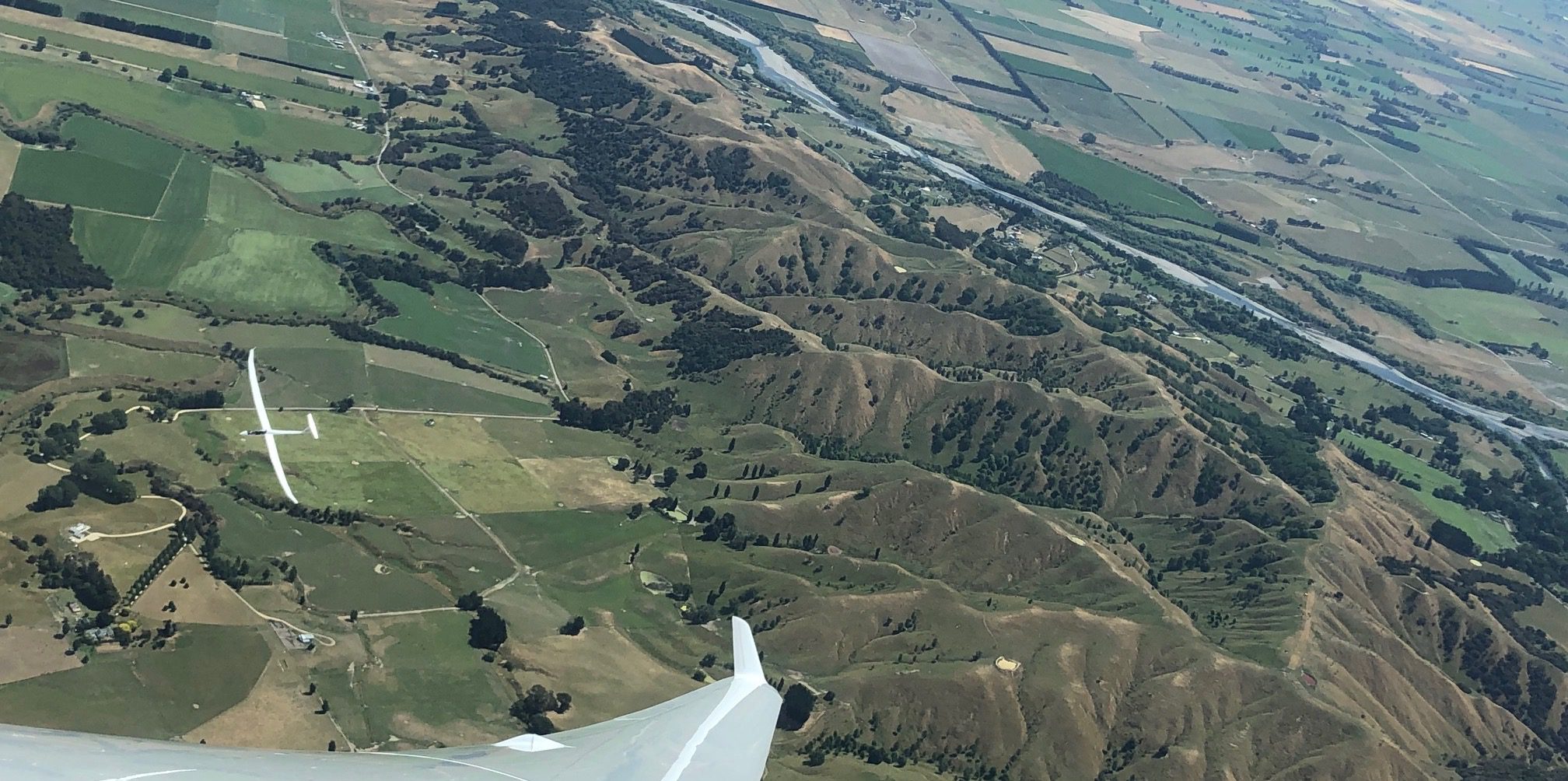
soaring using ridge lift
When the wind blows directly onto a large hill or mountain the air is forced up and over. Glider pilots can soar on the rising air on the side the wind is blowing onto. On the long mountain ranges and even low coastal ridges pilots can travel great distances often at high speed.
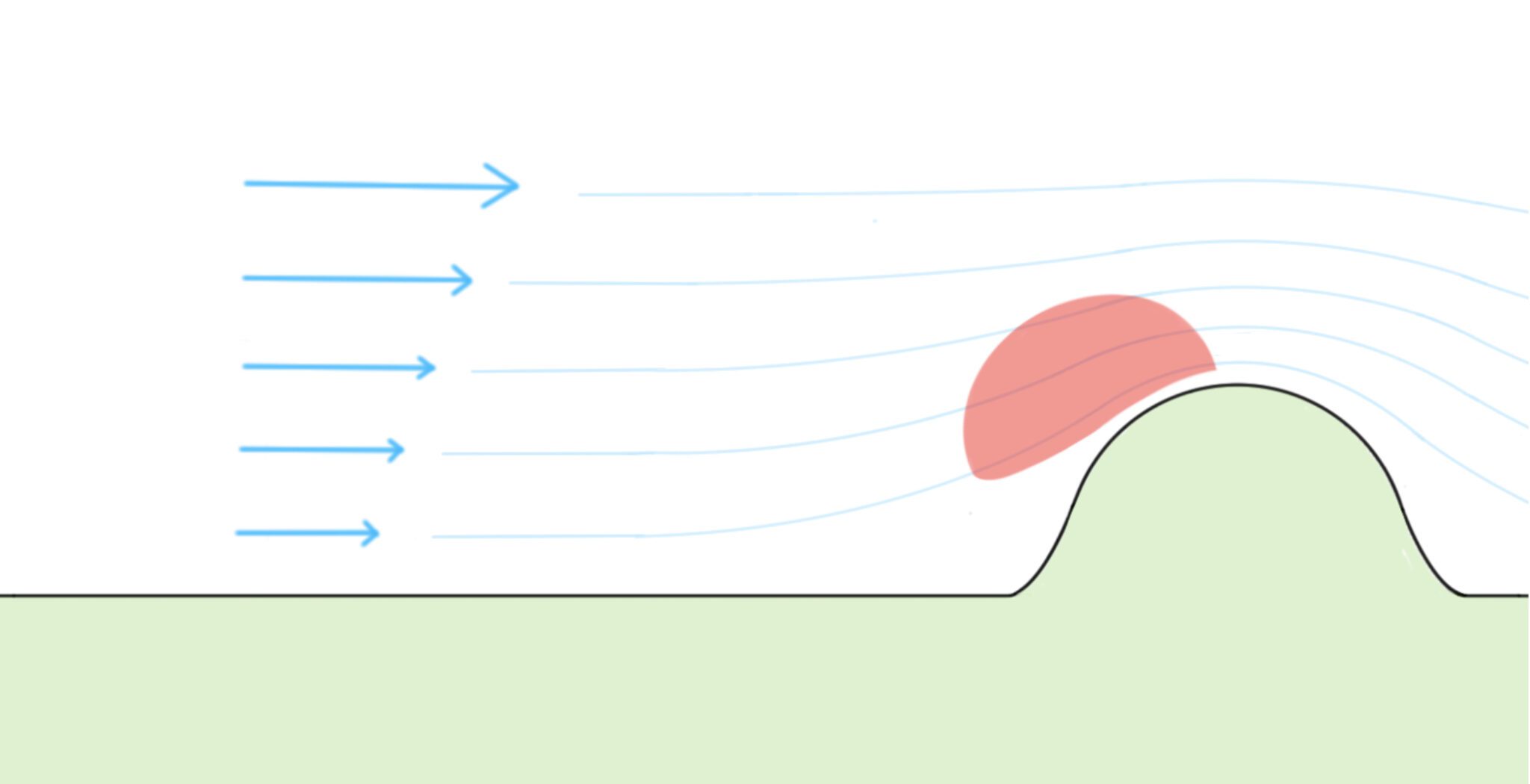
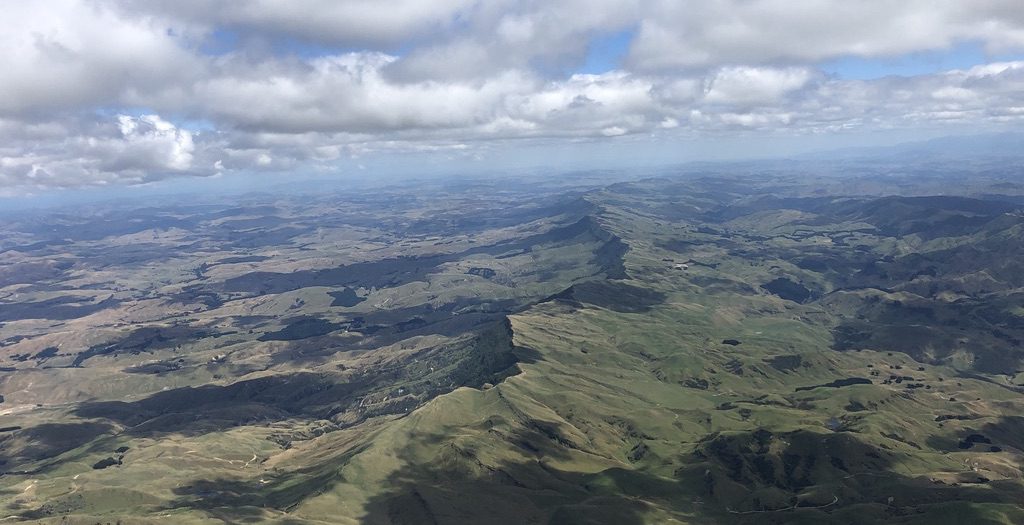
soaring using wave lift
When strong winds pass over a mountain range a ‘standing wave’ sets up downwind. These wave systems are often marked by Aotearoa’s ‘long white cloud’ and provide very strong lift to great altitudes. Wave lift allows for spectacular speed and distance records in gliders.


soaring a convergence
Gliders can soar along the zone when two air masses converge. In the photo the lower level of cloud is produced by cool air coming off the ocean to the left. The higher cloud, where the glider is soaring, is caused by warmer air from the right and climbing up over the cooler air.
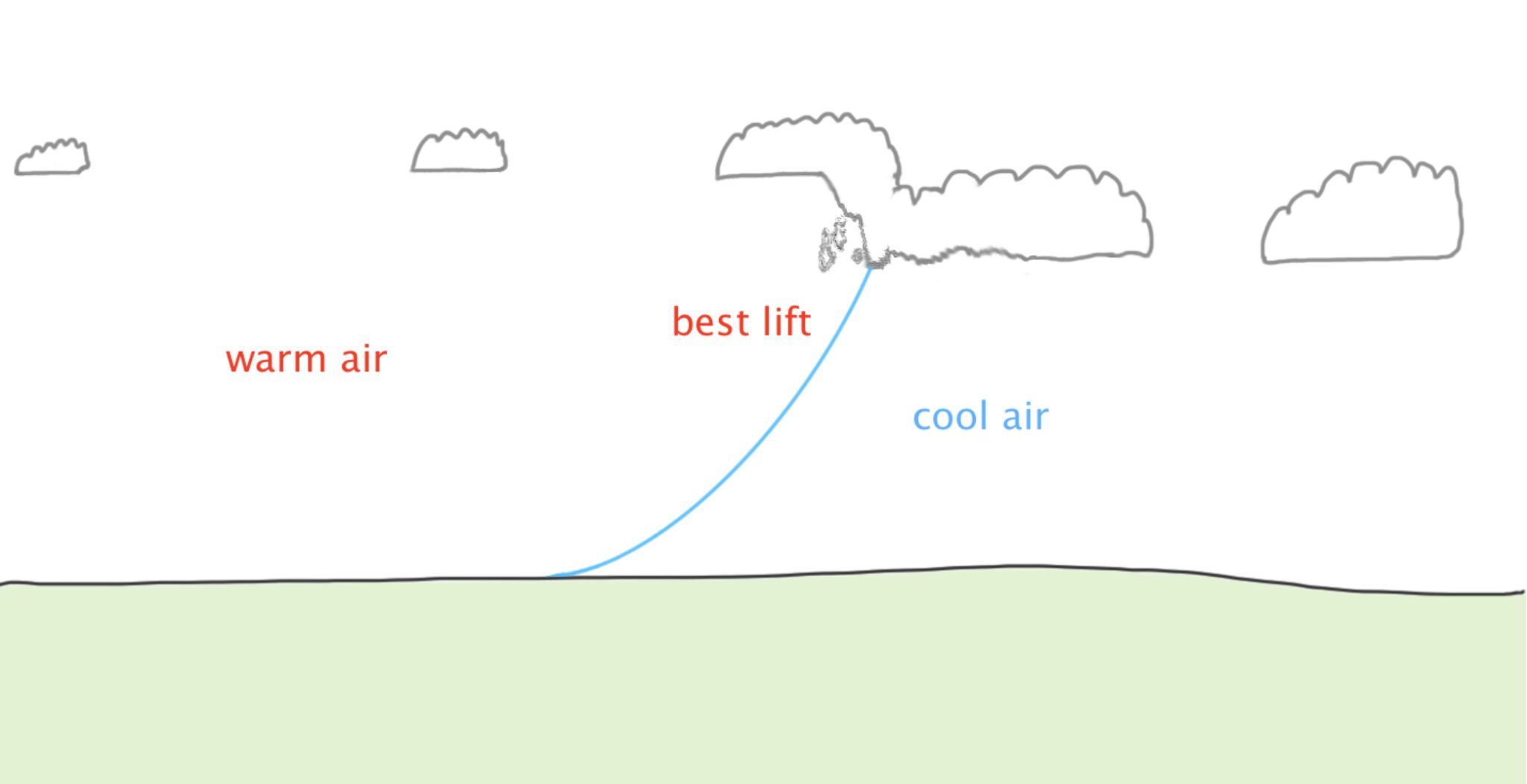
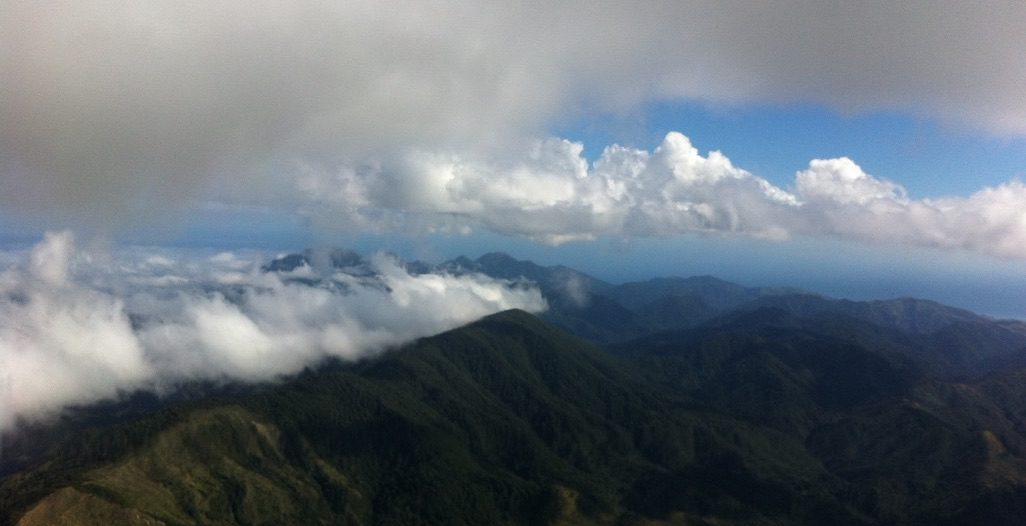
what’s the challenge?
The challenge of gliding is to stay up and go places. Pilots call this 'cross-county flight'. The aim of the Pilot Training Program is to develop safe and efficient cross-country pilots. After you have been signed off to fly cross-country the real adventure begins. You can join in contests, where 30 or more gliders launch together. You set off boldly on a distance task decided before the launch, based on the weather forecast and where the best lift is expected. We learn a lot from each other this way. Or just fly as far as you can on the day. An example of a 400 km out-and-return flight is below.
gliding is environmentally friendly
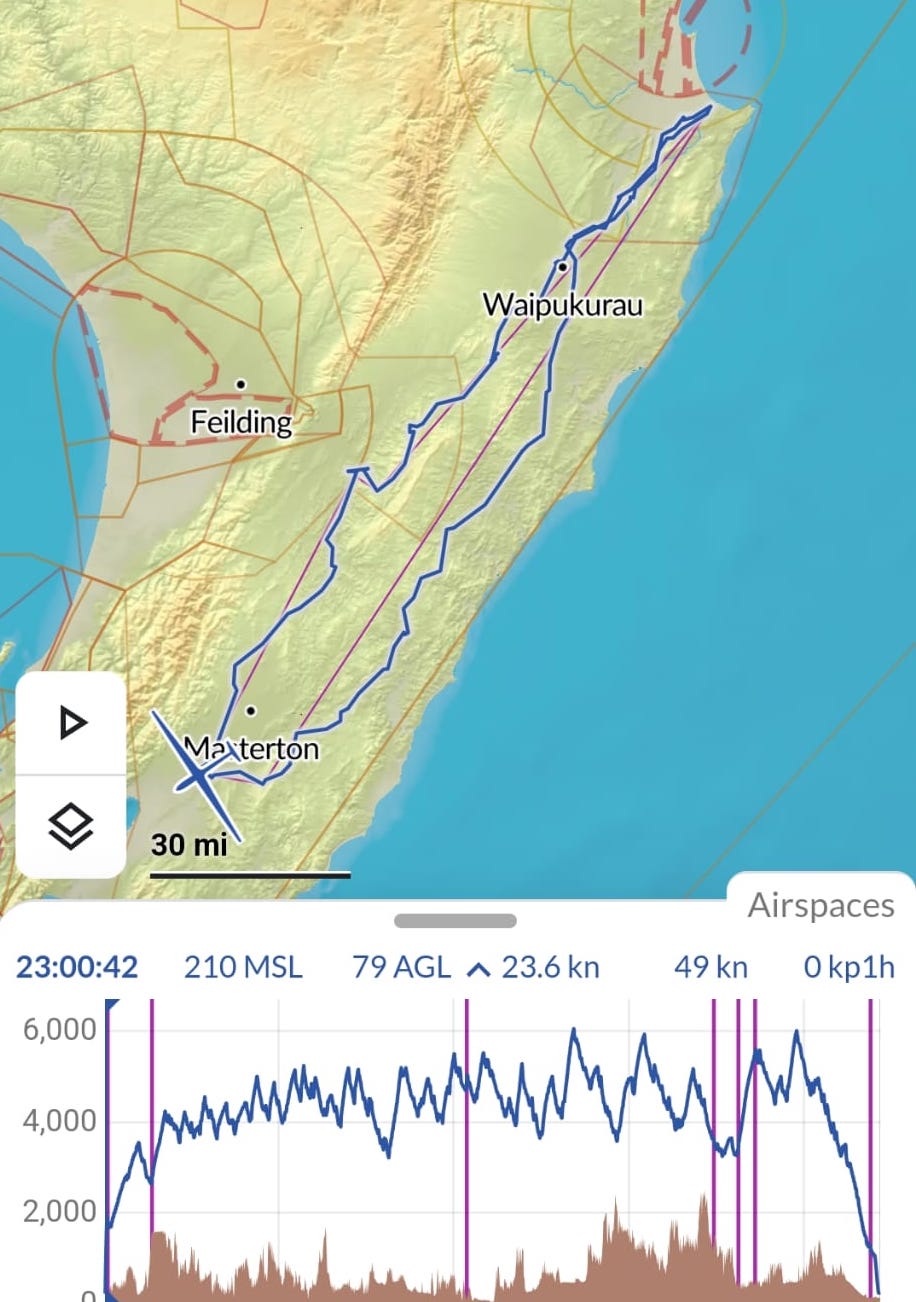
How could you travel 400 km at 100 kph or more
. . . and only use one litre of petrol?
Here’s how:
Use the petrol allowance to launch your glider by winch to about 2,000 feet.
Find a thermal and climb up to 4,000 feet.
Glide to the next thermal and climb up again, recovering the height you lost getting from one thermal to the next.
Repeat 40 times.
Some thermals won’t help much, but others will whisk you right up to cloud base.
Fly like this for 200 km then turn and fly all the way back to your start.
No straight lines. Land with a big smile.
The snapshot above is a ‘flight trace’ of a soaring flight in thermals. Note the zig-zag track over the ground – the pilot jumps from thermal to thermal using the clouds to help locate them. The lower trace is the altitude profile – a sequence of climbs (in thermals) followed by glides where height is exchanged for distance.
learning to fly
The basic skills of learning to launch, fly and land a glider are no more difficult that operating a motor car. Operating in three dimensions can be challenging, and a constant look-out is essential.
Gliding is taught in 2-seater gliders, where you fly with an instructor. There are two sets of controls. The instructor will teach you how to use the controls and give you plenty of time to practice.
Here’s how it works. First you learn to fly the glider: launch, manoeuvre and land. When you can do this to the required standard (as specified in the training program) a senior instructor will send you on your first solo.
The second stage is where you learn to 'climb' the glider, by finding and staying in rising air so that you gain altitude. This requires extra skill and finesse, but enables you to have much longer flights.
The third stage is where you learn to jump from one lift source to another nearby. Climb at bit, glide to the next lift source, climb again, and so on. After obtaining your cross-country clearance you are able to travel beyond gliding distance from the airfield. Now you can really taste freedom!
Cross-country soaring is what most new pilots aspire to. The learning continues, but now you learn from your peers rather than an instructor. The best way to do this is to fly in competitions, because then you can see how different pilots fly the same task at the same time.
With further training you can soar the high alpine environments which are so spectacular in New Zealand. Even soar to the top of Mount Cook from Omarama, 80 kilometres away!
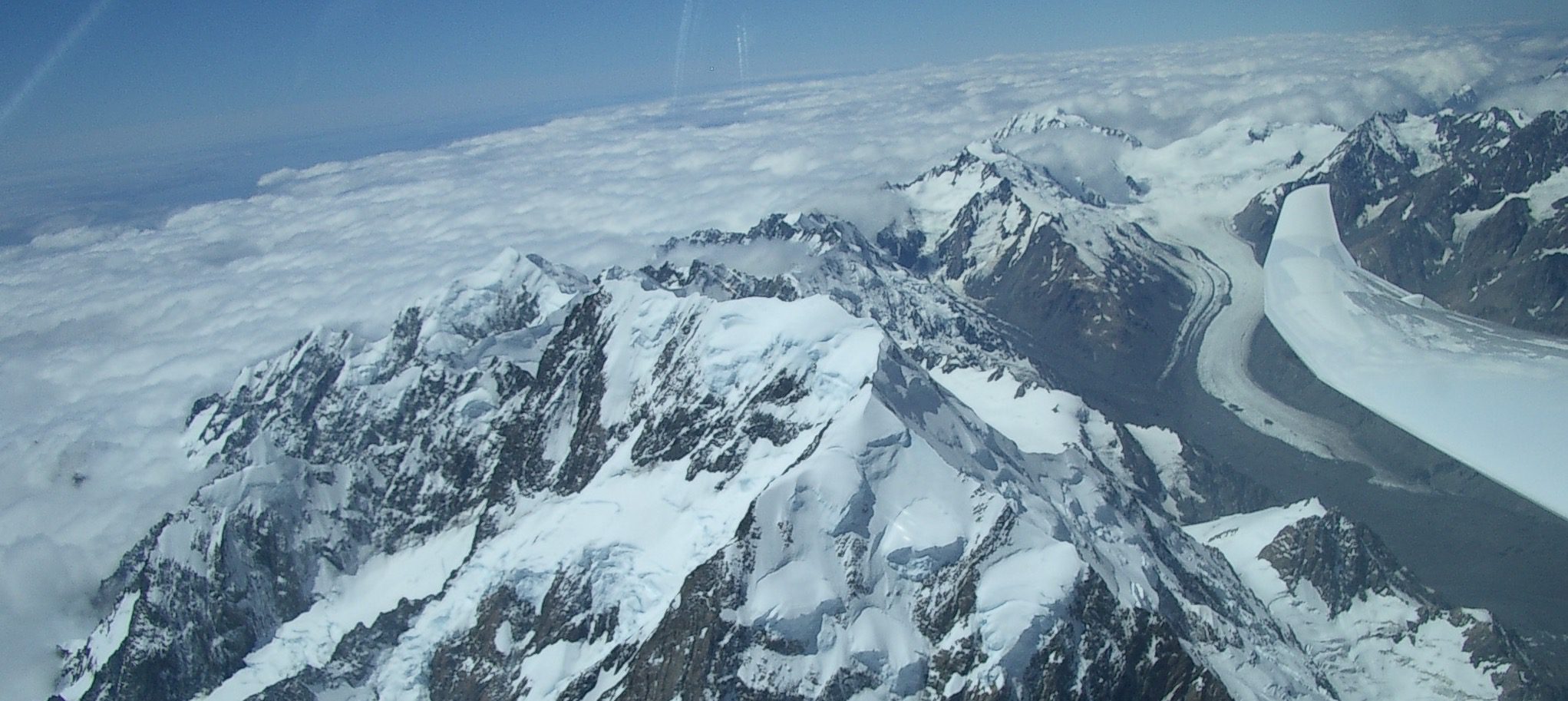
what is the cost?
Recreational aviation has traditionally cost a day’s wages for an hour’s flying, and it still does. The minimum time taken to fly solo in a glider is about 10 hours spread over 40 flights. At this rate, club membership for one year, glider hire and launch fees would add up to about $2,300 for youth members (age 25 or under) and $3,800 for adults. Some people do need more flights than this. Pilots who prepare between lessons, and show up regularly, make much faster progress - and there would be a cost saving.
Gliding clubs are non-profit organisations, so do not need to make a profit. This means that members only pay for the actual cost of the aircraft hire, the use of the runway and the launch. In return each member is expected to show up for a rostered duty every few weeks.
After pilots have learned basic handling skills - and then learned how to soar - the cost per hour reduces considerably. This is because pilots require fewer launches and enjoy longer flights, especially on soarable days. Winch launches are much cheaper than using a tow plane, but there is less flexibility regarding how high you can launch and where you can be released. See the 'forms and fees' section for more details.
regulatory
To fly a glider in NZ you are required to belong to a gliding club. These clubs are administered by Gliding NZ under a delegation from the NZ Civil Aviation Authority. The CAA sets the rules for gliding through Parts 104 and 149 of the Civil Aviation Rules.
Everything in gliding is regulated to ensure safe operation. There are “approved procedures” for just about every aspect of the sport. Clubs are audited for compliance with these procedures. The training program is subject to acceptance by the Civil Aviation Authority. Pilots are required to undergo a competency review every two years, and produce a medical certificate to confirm their fitness to fly.
Gliders in NZ are certificated to a design and manufacturing standard called CS-22. This ensures that the design, handling and maintenance of our gliders is to the highest standard of safety and reliability. Microlight aircraft, by contrast, are not as tightly regulated. These factors combine to make gliding one of the safest forms of recreational aviation.
how safe is gliding?
All adventure has some risk. But gliding has been around since the dawn of aviation (the Wright Brothers built gliders first), so the principles of gliding are well understood. These principles are embodied in Gliding NZ’s Pilot Training Program, which instructors will guide you through.
Almost all gliding accidents and incidents in NZ have – at their root – a failure to follow these proven principles. A similar principle applies when driving your car on the road. Gliding is a very safe sport – but sometimes accidents happen.
